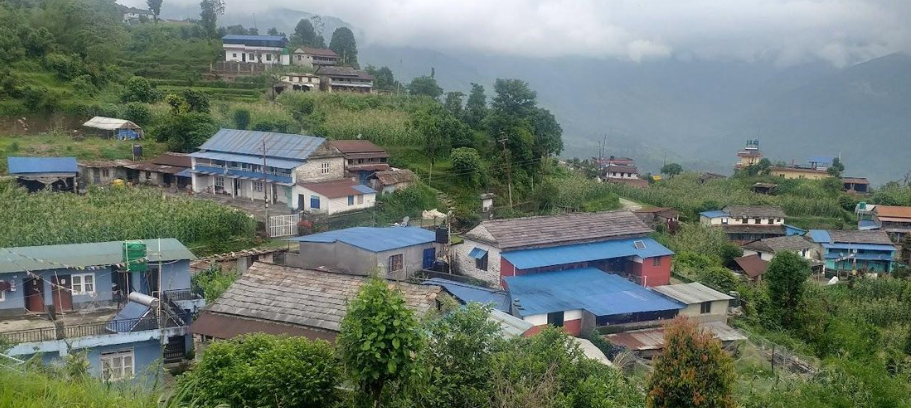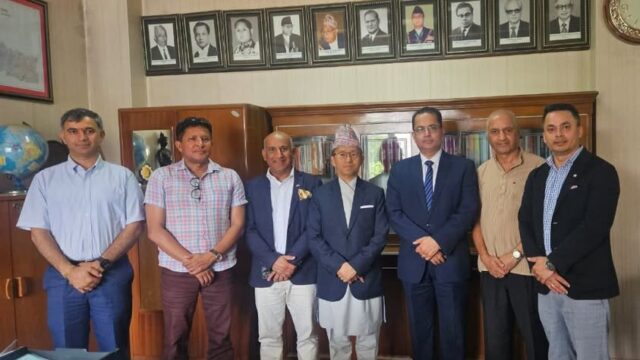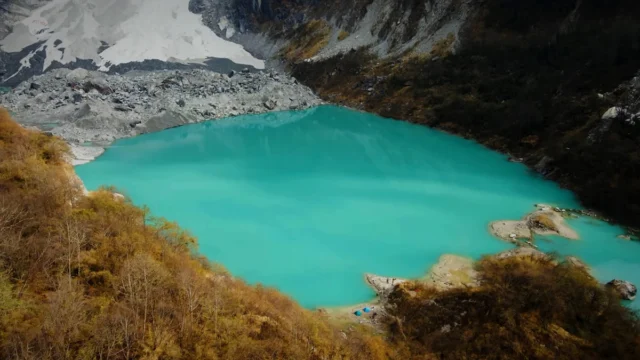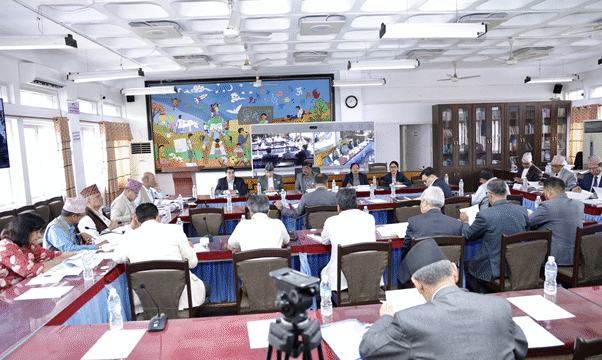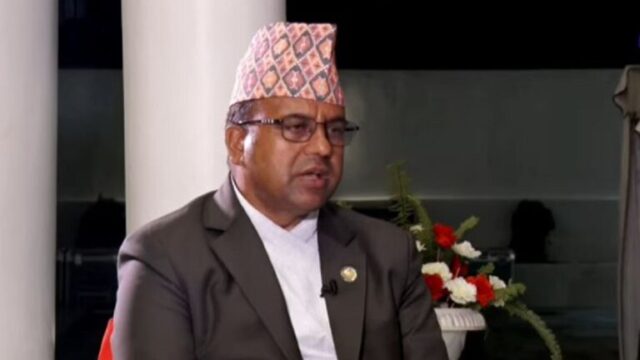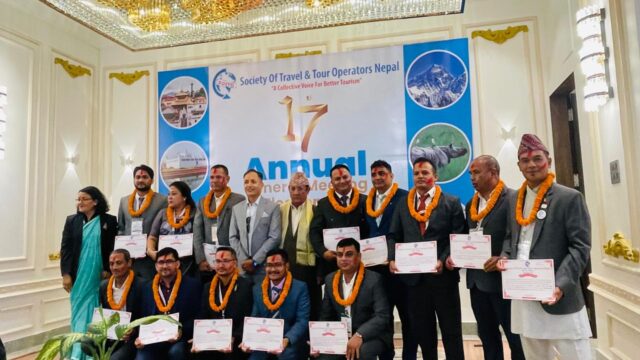This is Hyangjakot, a scenic and culturally rich tourist village nestled in Machhapuchhre Rural Municipality–6, Kaski. The monsoon symphony of chirping insects, the glimmering water pooling at the edge of freshly planted paddy fields, and the majestic view of snow-capped peaks rising above lush green forests create an unforgettable sensory experience for visitors arriving at Hyangjakot, a serene village in Machhapuchchhre Rural Municipality–6, Kaski. This tranquil escape, just 18 kilometers from Pokhara’s Simpani, is home to a thriving community-based homestay model, blending natural beauty with authentic Gurung culture.
A Peaceful Retreat with Majestic Views
As soon as one sets foot in the village, the cool Himalayan breeze greets the skin while the peaceful ambiance refreshes the soul. Surrounded by thick green jungles and with a panoramic view of Pokhara Valley to the south, Hyangjakot offers a front-row seat to some of Nepal’s most celebrated peaks, including the iconic Machhapuchchhre (Fishtail), Annapurna, and Lamjung Himal. On clear days, one can even glimpse the neighboring village of Lwang and its scenic tea gardens.
This picturesque destination falls within the popular “Machhapuchchhre Model Trek,” drawing a steady influx of both domestic and international tourists during peak seasons.
A Village Rich in Culture and Hospitality
Hyangjakot is predominantly inhabited by the Gurung community, with around 50 households in total. Of these, 12 homes currently operate as part of the community homestay program, collectively accommodating up to 80 guests. The village’s signature hospitality includes welcoming visitors with flower garlands and traditional panche baja (five traditional musical instruments), showcasing the deep cultural pride of the locals.
Started in 2064 BS (2007 AD), the Hyangjakot Community Homestay was officially recognized in 2072 BS by Nepal’s Ministry of Tourism as an “Excellent Village Tourism Destination.” Since then, its popularity has surged among trekkers, cultural enthusiasts, and those seeking peaceful retreats.
Traditional Experiences and Affordable Packages
Homestay Chairman Ishwar Gurung shared that guests particularly enjoy traditional Nepali dishes like dhido (a thick millet porridge), locally raised chicken, and homemade raksi (millet-based liquor), paired with nightly cultural performances. “Tourists often find joy in dancing with locals during cultural evenings,” he said.
The standard package, priced at around NPR 1,000, includes a complete village experience — from a warm welcome to locally sourced meals, snacks, overnight lodging, and participation in cultural programs. All produce is organic, grown within the village, from millet and potatoes to spinach and mustard greens.
Growing Infrastructure and Tourism Interest
According to local tourism entrepreneur Harka Gurung, the influx of tourists has triggered a wave of infrastructure development in and around the village. Notably, two large hotels are being constructed in Dhital, a neighboring village just three kilometers to the east, with investments running into billions of rupees.
While such developments are signs of progress, Gurung expressed concern over a less visible yet growing challenge, the migration of villagers to urban areas. “Despite the growth in tourism, many residents have shifted to Pokhara or Kathmandu for better opportunities. This migration trend, if it continues, could leave our historically rich village hollow,” he cautioned.
Seasonal Fluctuations and Basic Facilities
Sundar Gurung, operator of Homestay No. 10, noted that tourist numbers dip slightly during the monsoon season due to weather-related access issues, but pick up significantly during autumn and spring. “With the availability of water, electricity, and mobile networks, tourists now find it easier to enjoy their stay even in rural settings,” he added.
Still, the homestay program has faced setbacks. According to Kumar Gurung, who helped launch the initiative, the program initially started with 20 households, but is now limited to 12 due to migration. “This village has everything, beauty, culture, and potential. If only we could stop the outmigration, we could restore its former vibrancy,” he lamented.
A Balancing Act Between Development and Preservation
The case of Hyangjakot illustrates the delicate balance between tourism development and the preservation of rural communities. On one hand, the village is gaining recognition as a model destination for eco-tourism and community-based hospitality. On the other, the pull of urban life continues to weaken its social fabric.
Nonetheless, the homestay model in Hyangjakot serves as a compelling example of how rural tourism can offer economic opportunities while preserving cultural identity. With further investment in sustainable infrastructure, community engagement, and youth retention programs, Hyangjakot could evolve into a benchmark for rural tourism development in Nepal.
As the village continues to enchant its visitors with mountain views, traditional meals, and warm Gurung hospitality, it also silently hopes that its own children will one day return to take pride in the legacy of their homeland, a small, serene village that holds the soul of Nepal’s rural beauty.
